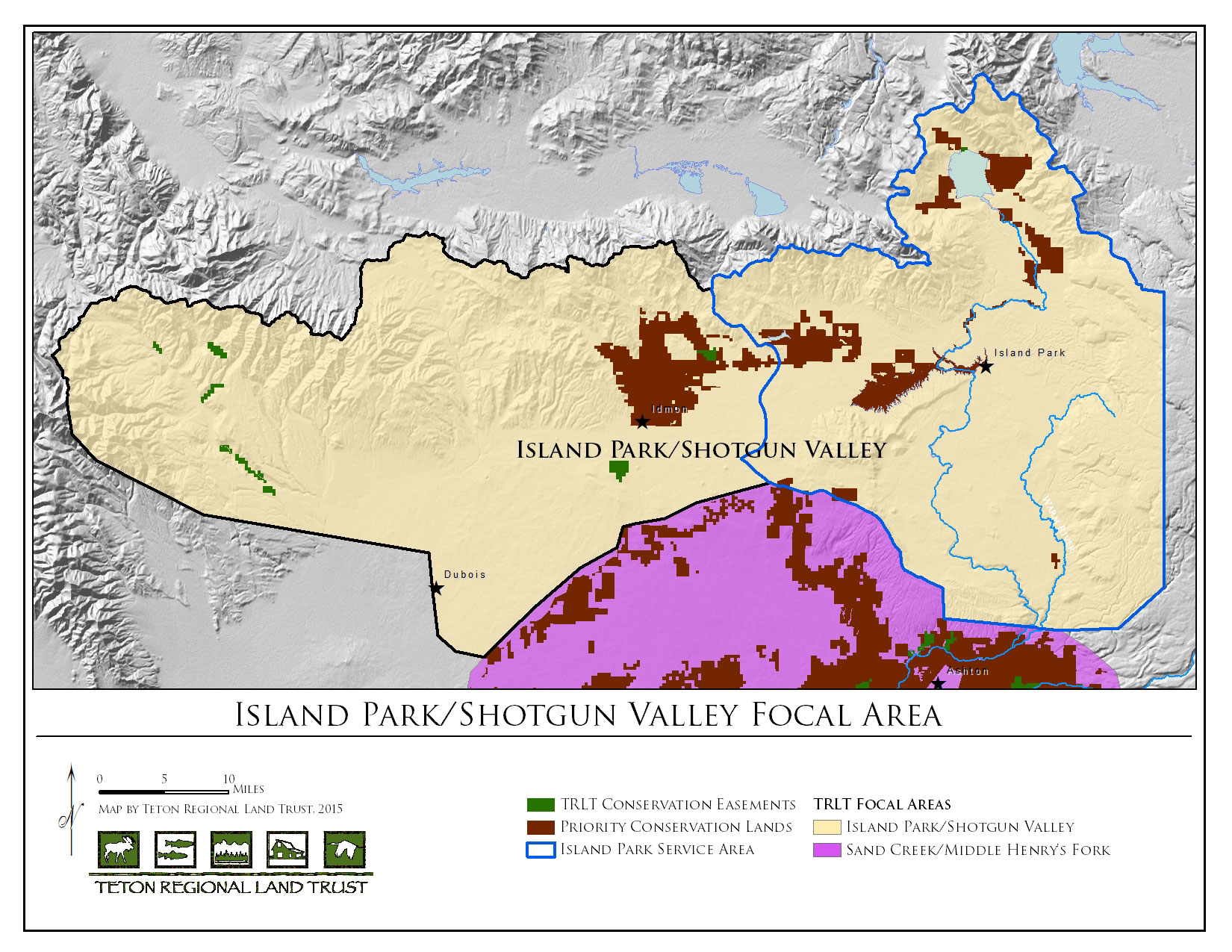The South Fork Snake River corridor from Swan Valley to the Menan Buttes is one of the Greater Yellowstone Ecosystem’s (GYE) most outstanding fish and wildlife resources. The U.S. Fish and Wildlife Service ranked the cottonwood gallery forest along this reach of the river the number one wildlife resource in Idaho. The complex cottonwood forest is home to a large diversity of bird species, as it supports 25 species of nesting birds of prey, including the most productive Bald Eagle nesting habitat in the GYE. The South Fork is widely regarded as the finest native cutthroat trout river in the country and includes large populations of native Yellowstone Cutthroat Trout.
Extensive cottonwood riparian forests and the surrounding canyons and cliffs along the South Fork provide vital habitat for a diverse population of neo-tropical migrant songbirds, 14 bald eagle breeding territories, three peregrine falcon eyries, mountain lion dens, as well as abundant habitat for black bears and large game such as elk, moose, and mule deer. With many of these species listed as sensitive, threatened or declining, habitat protection is critical.
The South Fork is also of critical importance to swans, geese and many other waterfowl during migration, nesting, and wintering as it supports up to 300 wintering Trumpeter Swans.
Development continues to threaten these critical scenic and natural resources, as the ridge tops of the canyon and the cottonwood galleries and wetlands of the river bottoms are being degraded. The Land Trust is working with willing landowners, the Bureau of Land Management, the U.S. Forest Services, as well as NGO partners such as The Nature Conservancy and The Conservation Fund to protect these important lands and natural resources forever.
The Teton Basin has been ranked the number one private lands conservation priority area within the Greater Yellowstone Ecosystem. Teton Basin contains populations of rare and sensitive plant and animal species, including vulnerable and sensitive wetlands, streams, rivers, and aquatic habitat, vital vegetative communities that support wide-ranging animals such as elk, moose and deer. According to the Idaho Department of Fish and Game, the area also offers important habitat for over 42 Species of Greatest Conservation Need.
Among Teton Basin’s most notable and threatened ecological features are its prominent wetlands. These wetlands include expansive marshes and sloughs as well as vitally important forested wetlands of aspen and cottonwood. These wetlands serve as important habitat for many rare plant and animal species.
Of special importance are Teton Basin’s fens, which contain organic soils (peat) fed by groundwater. Fens require thousands of years to form and are highly sensitive to disturbance and are considered, irreplaceable. Teton Basin supports significant habitat for a number of bird species including nesting and pre-migration staging Sandhill Cranes, breeding Long-billed Curlew, wintering Trumpeter Swans, and year-round habitat for Columbian Sharp-tailed Grouse. All of these are Species of Greatest Conservation Need.
Sand Creek & Middle Henry’s Fork
This is a key area of eastern Idaho for ensuring connectivity for large carnivores and big game species moving between summer habitats within Yellowstone National Park and their winter habitats around the Sand Creek Desert. This area encompasses the Big Bend Ridge, the Fall River, and private lands surrounding the Sand Creek and Chester Wildlife Management Areas.
The Henry’s Fork River has been ranked as the number two conservation priority within the entire Greater Yellowstone Ecosystem for its combination of ecological irreplaceability and vulnerability. This area contains incredible biological diversity, populations of rare and sensitive plant and animal species, and a variety of vegetative, abiotic, aquatic habitat characteristics supportive of large, wide-ranging wildlife.
The Island Park Caldera, Henry’s Lake Flat, Shotgun Valley, and the south slope of the Centennial Range make up a large and diverse landscape of open vistas and abundant wildlife habitat. In this area, opportunities exist to work with landowners who possess large parcels of expansive high elevation habitat. This higher elevation habitat provides great value to wintering elk, sage grouse, and migrating raptors, grizzly bears, wolves, wolverines, and many other species
The critically important private lands of the Henry’s Lake area are comprised of summer range ranches for cattle and recreational home sites. Encircled by the Continental Divide and adjacent to Yellowstone National Park, the area is extremely valuable for its wetland and aquatic resources and as a keystone migration corridor for large carnivores, connecting the Greater Yellowstone, Central Idaho Wilderness and the Northern Continental Divide ecosystems. This area contains the shoreline wetlands of Henry’s Lake, spring creeks, sage steppe uplands, and conifer/ aspen mixed forests.
The Shotgun Valley area is located on the south slope of the Centennial Range and is bordered by the Continental Divide to the north and both the Island Park reservoir and Thurman Ridge to the south. This area comprises critical migratory corridors for elk that winter in the lower Henry’s Fork and St. Anthony sands dunes further to the south. The private lands in the valley floor consist of sage steppe, low elevation aspen, mixed conifer, and riparian wetland communities. The current undeveloped condition of much of this valley allows for landscape scale restoration and protection projects, such as aspen and sage brush regeneration.






